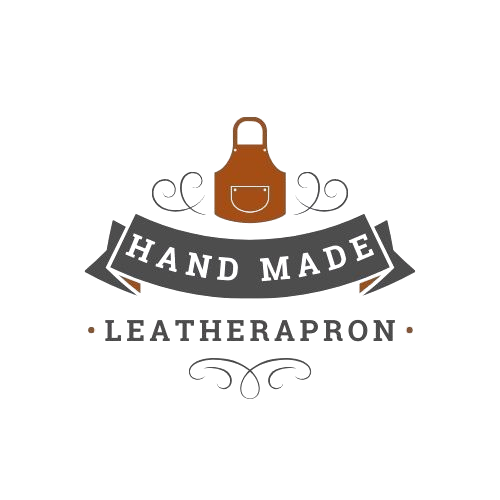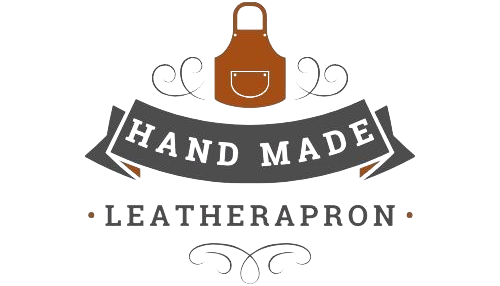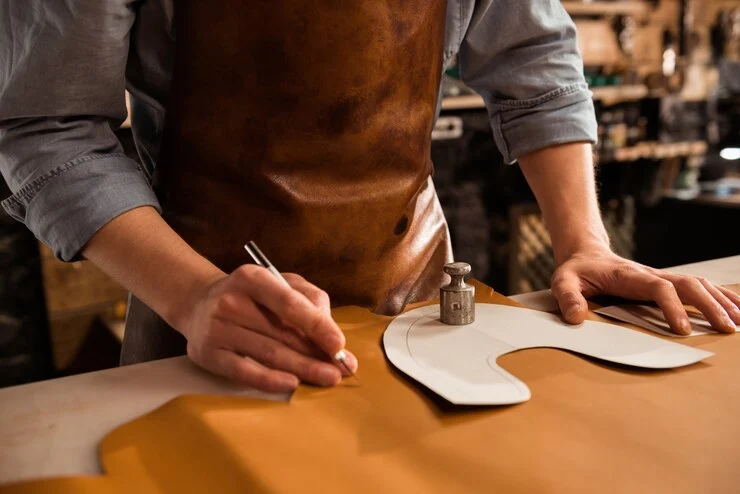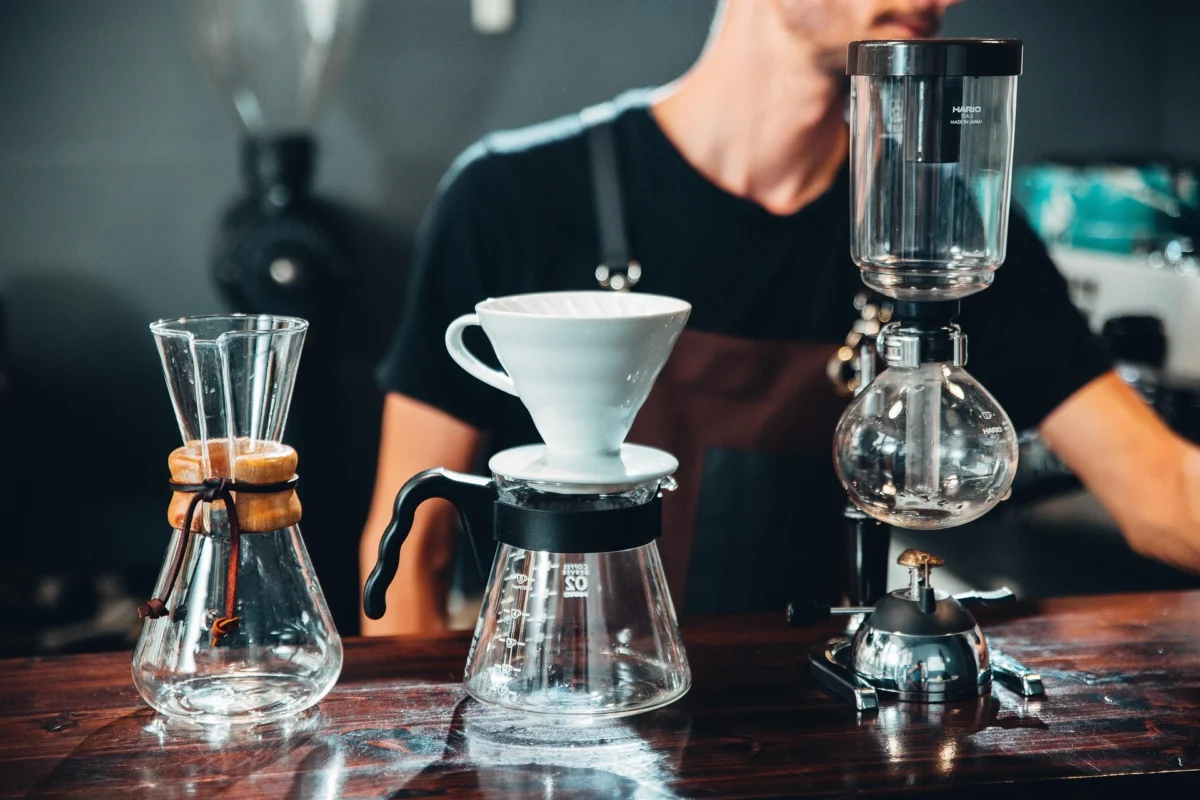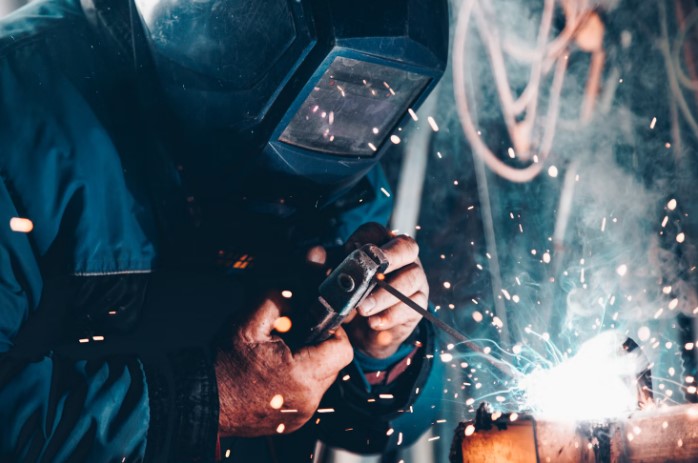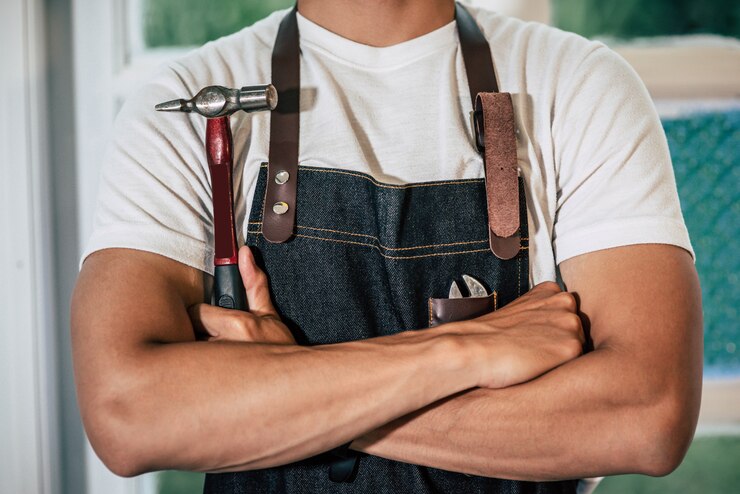The Ultimate Guide to Leather Aprons: Durability, Style, and Functionality

Introduction
Leather aprons have evolved from protective gear to stylish and functional accessories. Previously required for heavy-duty work and craftsmanship, they are now widespread in kitchens, workshops, salons, and DIYers. Due to their safety and sophistication, they are essential in numerous fields, including food and crafts.
We’ll go over the advantages of leather aprons for various occupations, their manufacturing process, why they’re worth the money, and how to choose the best one for your requirements in this guide. This guide contains all you need, whether you’re a chef searching for a high-quality cooking partner or a hobbyist seeking long-lasting outerwear.
Why Choose a Leather Apron?
Durability
Leather aprons are a long-term investment due to their durability. Leather is much stronger than cotton aprons, which shred, discolor, and wear thin. From stove heat to workshop sparks, it can withstand rugged use. Over time, leather softens and conforms to your body without losing durability. When properly maintained, a leather apron can last for years.
Protection
Leather aprons provide better protection than most other materials in the following ways:
- Spills and Stains: Because Leather naturally repels liquids and is water-resistant, spills and stains are less likely to seep through the cloth. You won’t have to be concerned about your apron getting permanently stained when cooking, creating, or working on do-it-yourself projects.
- Sharp Tools: Leather serves as a barrier to stop cuts and abrasions whether you’re handling knives, scissors, chisels, or other sharp objects. It provides a durable shield to protect you while working hard.
- Heat Resistance: Because of its ability to withstand heat, Leather is perfect for jobs involving high temperatures or hot surfaces, such as welding, grilling, and even ceramics.
Comfort
Leather aprons outperform cotton and plastic ones in comfort. With use, the leather becomes pliable and comfortable—it molds to your body, offering complete freedom of motion without compromising protection. Leather’s natural weight appropriately distributes pressure, reducing neck and shoulder strain. This makes it ideal for long-term employment without pain.
Versatility
The adaptability of leather aprons is one of their best qualities. These aprons can be utilized in a variety of fields and pursuits; therefore, they are not limited to any one particular use:
- Cooking and Grilling: For home cooks and chefs who require protection from hot splashes, oil, and food stains, leather aprons are ideal. When handling heavy pots and pans, their durability is also advantageous.
- Woodworking and Metalworking: Leather aprons provide unparalleled safety for artisans who work with sharp objects, bulky materials, or sparks without limiting mobility.
- DIY and Crafting: When working with paints, glues, or other equipment, a leather apron protects your clothing and gives you a polished, businesslike appearance.
- Welding and Heavy-Duty Work: Welders and other tradespeople prefer leather because of its resistance to flame and capacity to endure harsh environments.
Given these advantages, leather aprons are more than simply a useful item; they are a must-have for anyone seeking dependable safety, comfort, and style in their work attire.
Leather Aprons Across Different Industries
Cooking and Baking
Because of their fashionable yet functional appearance, leather aprons have become a staple in the kitchens of both home cooks and professional chefs. Leather aprons withstand water, oil, and other stains, maintaining their sleek, polished appearance even after extensive usage, in contrast to cotton aprons, which frequently become discolored by food spills. Chefs love leather because of its resilience, which prevents it from wearing out or losing its shape even after frequent washings or exposure to heat. Furthermore, whether you’re chopping, stirring, or plating, you may move freely due to the natural flexibility of leather.
Leather aprons are not only functional but also lend a sense of refinement and professionalism to the kitchen. A fine leather apron gives your cooking routine a sophisticated touch, whether you’re preparing for guests or just practicing.
Crafting and DIY Projects
A leather apron is an indispensable piece of equipment for do-it-yourselfers and craftsmen, serving as more than just a protective garment. Crafting frequently entails handling items that can harm clothing, such as paints, glue, and sharp tools. These dangers are mitigated by leather aprons, which screen your skin and clothing from splatters, stains, and wounds.
- Sharp Tools: Leather provides superior protection against unintentional cuts whether you’re working with precision equipment, cutting fabric, or carving wood.
- Paint and Adhesives: Because Leather is stain-resistant, it’s perfect for tasks using paints, glues, or dyes, which frequently leave clothing permanently marked.
- Durability: A leather apron’s durable substance can keep you safe as you transition between various artisan activities, such as metalworking, woodworking, or ceramics.
A leather apron, which combines design and functionality into one long-lasting garment, has become a signature item for many professionals and hobbyists.
Woodworking and Welding
Leather aprons are essential in the realm of heavy-duty trades. Professionals such as welders, metalworkers, and woodworkers depend on leather aprons to offer the best protection possible when doing demanding, dangerous jobs. This is the reason:
- Sparks and Debris: Hot debris and sparks are a continual worry when welding or working with metal. By serving as a barrier, leather aprons keep harmful substances away from your skin.
- Heat Resistance: The inherent heat-resistant qualities of leather guard against burns from hot surfaces, molten metal, or instruments. Because of this, it is a necessary item for people who work in hot situations.
- Abrasion Protection: Leather’s resilience helps shield your clothing and skin from abrasions, scratches, and friction—whether you’re sanding wood, cutting metal, or engaging in any other abrasive activity.
Professionals who require mobility and safety in challenging conditions use leather aprons because of these protective features.
Barbershops and Salons
Leather aprons are becoming more and more popular in the grooming and beauty sectors because of their ability to combine durability, style, and functionality. In addition to protecting them from hair clippings, dye, and other salon supplies, barbers and hairstylists require aprons that enhance their professional appearance.
- Durability: Whether you’re handling different salon supplies or cutting hair, leather aprons can endure the wear and tear of frequent use.
- Aesthetic Appeal: Many barbershops and salons want to create a high-end, professional vibe, which is complemented by the sleek, polished appearance of a leather apron. These professionals are made more sophisticated by the classic attractiveness of leather.
- Comfort and Fit: Since these workers spend their entire day on their feet, leather aprons provide comfort and mobility, which makes them perfect for extended shifts. Over time, the material becomes softer, allowing for a personalized fit for optimal comfort.
Leather aprons provide practical protection against the everyday struggles faced by barbershop and salon employees while also enhancing the aesthetics of the spaces.
How Leather Aprons Are Made
Material Quality
The longevity, comfort, and general functionality of an apron are greatly influenced by the quality of the leather used in its construction. The primary leather varieties frequently seen in leather aprons are as follows:
- Full-Grain Leather: The best leather on the market is this one. Full-grain leather preserves all of the hide’s thickness and natural texture, including flaws like blemishes or scars. This kind of leather is perfect for heavy-duty use since it is incredibly resilient to wear and tear, acquires a gorgeous patina over time, and is incredibly robust.
- Top-Grain Leather: Top-grain leather is polished and buffed to eliminate surface flaws and is marginally less expensive than full-grain leather. Although it seems more consistent, it is nonetheless strong and has a lot of the same qualities as full-grain leather. Higher-end leather aprons that strike a balance between quality and affordability frequently use top-grain leather.
- Split Leather: This type of leather is made from the lower layers of the hide after the top grain is separated. Although it might not be as durable as full-grain or top-grain leather, split leather is still a good choice for lighter-duty aprons. It can provide a softer feel at a lower price point.
The strength, appearance, and longevity of the apron are directly impacted by the type of leather used; full-grain leather is frequently chosen for its unparalleled durability, but top-grain and split leather are excellent substitutes based on the needs and budget.
Craftsmanship
Crafting superior leather aprons requires expert expertise. Making a leather apron entails a number of crucial procedures, each of which calls for a specific degree of skill to guarantee the apron’s durability and functionality:
- Cutting and Shaping: Skilled craftspeople meticulously cut the leather into the appropriate shape, taking into account both practicality and appearance. For the apron to fit properly and offer the most protection, the pattern needs to be precise.
- Stitching: An essential component of the apron’s design is its stitched seams. For the apron to remain together under pressure, strong, even stitching is essential. To increase durability, many premium leather aprons include double-stitched seams and thick, waxed threads.
- Edge Finishing: The leather apron’s edges are meticulously burnished and smoothed to prolong its lifespan and stop fraying. This procedure reinforces the apron in addition to improving its appearance.
- Riveting and Hardware: For robustness and flair, metal rivets or buckles are a common component of leather aprons. Craftsmanship is crucial in ensuring that these components are firmly secured because improper installation can result in weak spots.
A product made with premium materials and skilled craftsmanship will last for many years without losing its usefulness or aesthetic appeal.
Customization Options
The option to customize leather aprons is one of its appealing qualities. Numerous producers of leather aprons provide customization choices so that clients can give their aprons a special touch:
- Initials or Name: Many people decide to have their name or initials etched or embossed on their leather apron. This makes the apron uniquely yours and adds a personal touch.
- Logos or Branding: Businesses can improve the apron’s polished appearance and feel by personalizing it with their logo or other branding components. This is particularly common in sectors where upholding a consistent brand image is crucial, such as cuisine, barbershops, and salons.
- Design Details: Additionally, some manufacturers let customers customize the apron’s design. You can customize your leather apron to suit your needs by adding extra features like tool loops or straps, changing the pocket location, or selecting a certain color of leather.
Leather aprons can be customized to express one’s brand or personal identity in addition to being utilitarian. A personalized leather apron is the ideal combination of fashion and functionality, whether you’re looking for a one-of-a-kind present or a trademark item for your company.
Tips for Choosing the Right Leather Apron
Fit and Comfort
Your main concerns when selecting a leather apron should be fit and comfort. Along with offering durability and safety, a properly fitting apron will guarantee that you may move freely without feeling constrained.
- Size and Adjustability: Choose aprons with adjustable waist and neck straps. These let you customize the fit for comfort. A good apron should fit over your shoulders without rubbing your neck and include adjustable waist straps, depending on your body shape.
- Length: Consider the apron’s length based on your needs. A full-length apron provides more protection in restaurants, workshops, and near heat sources. Try a waist or half-apron if you want something lighter for light work or creativity.
- Weight of Leather: Though more challenging to break in, heavier leather is more protective. Although less durable, lighter leather aprons may be more comfortable for all-day use. Find a balance between your tasks.
Style and Design
It’s crucial to choose a leather apron that complements your activities and personal style because it comes in a variety of designs and styles.
- Full-Length Aprons: Because they offer the most coverage, these are perfect for settings where you might be near heat, spills, or sharp items. Full-length aprons, which protect head to knee or even lower, are frequently used in carpentry, welding, and cooking.
- Half-Length or Waist Aprons: These offer more movement and are more compact. A half-apron can be a better option if your tasks don’t call for complete coverage, including light handicraft, barista work, or bartending. They provide comfort and stain and minor spill protection at the same time.
- Utility Features: To make your work easier, look for aprons with extra pockets, tool loops, or holders. Some aprons are more practical for professions like barbers, chefs, or artists because they contain pockets specifically designed to hold pens, notepads, or even cell phones.
- Aesthetic Appeal: Distressed, polished, and rustic leather aprons are available. Your apron might be sleek and modern or old and rustic, depending on your style and setting.
Care and Maintenance
A leather apron is an investment that requires regular care and upkeep to ensure it lasts for many years.
- Cleaning: Machine washing a leather apron may harm it. Instead, clean it with a damp cloth after each use to remove dust, grime, and minor spills. Use a leather cleaner intended to clean your apron’s leather thoroughly.
- Conditioning: Over time, leather may become dry, particularly if it is exposed to heat or sunshine. Use leather conditioner every few months to maintain the softness and suppleness of your apron. This keeps the leather from becoming stiff or breaking and preserves its natural oils.
- Storage: Because direct sunlight and heat sources might cause the leather to warp or fade, keep your apron out of direct sunlight and store it somewhere cool and dry when not in use. To maintain its shape, hang it from a strong hook or use a hanger made for leather goods.
- Avoid Water Damage: Although leather aprons may withstand some water, they shouldn’t be left in damp environments or immersed in water. If your apron does become wet, dab it lightly with a towel and let it air dry naturally, out of direct sunshine and away from heat sources like radiators.
You can make sure that your leather apron will last for many years by adhering to these fit, design, and maintenance guidelines, providing protection and style for any work you undertake.
Conclusion
In conclusion, a leather apron is durable, fashionable, and helpful, adding value to many industries and activities. It is more than protective clothing. Leather aprons are essential for hands-on workers because of their durability, heat protection, sharp object protection, stain resistance, comfort, and adaptability. A leather apron can improve your workplace whether you’re a welder, beautician, cook, artisan, or DIYer.
Selecting the right leather apron adds personality to your daily routine while providing safety and efficiency. Get a long-lasting leather apron to boost your workwear.
Are you prepared to spend money on a premium leather apron? Examine reputable companies and merchants that provide individualized choices and long-lasting styles that meet your unique requirements. Find the ideal leather apron to elevate your work by starting your search right now.
